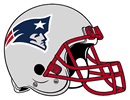QB Tom Brady
 Outside of his magical 2007 season when he threw for nearly 5,000 yards and 50 touchdowns, Brady was never better than he was in 2010. Despite losing the team’s projected top receiver and only true deep threat, Randy Moss, in an early-season trade and being left with a group of merely average receivers, Brady threw for 3,900 yards and 36 touchdowns with a career-low four interceptions. He easily adapted to Moss’ departure, with the offense moving from an air-it-out to more of a dink-and-dunk approach. Considering what he accomplished last year with a lackluster receiving corps, Brady is essentially a guarantee to produce at quarterback. With talented tight ends Rob Gronkowski and Aaron Hernandez entering their second seasons and with the team hopeful that either Brandon Tate or Taylor Price can scare defenses a little on the outside, Brady should at least match his strong season from a year ago.
Outside of his magical 2007 season when he threw for nearly 5,000 yards and 50 touchdowns, Brady was never better than he was in 2010. Despite losing the team’s projected top receiver and only true deep threat, Randy Moss, in an early-season trade and being left with a group of merely average receivers, Brady threw for 3,900 yards and 36 touchdowns with a career-low four interceptions. He easily adapted to Moss’ departure, with the offense moving from an air-it-out to more of a dink-and-dunk approach. Considering what he accomplished last year with a lackluster receiving corps, Brady is essentially a guarantee to produce at quarterback. With talented tight ends Rob Gronkowski and Aaron Hernandez entering their second seasons and with the team hopeful that either Brandon Tate or Taylor Price can scare defenses a little on the outside, Brady should at least match his strong season from a year ago.
RB BenJarvus Green-Ellis
BJGE came out of nowhere to have a breakout season in 2010. The former undrafted free agent had 1,008 rushing yards, becoming the team’s first 1000-yard running back since Corey Dillon in 2004. He proved to be an effective closer and short-yardage back with his 13 touchdowns, helping him to a 15th place fantasy ranking at running back. And what was his reward for such a respectable season? Watching the team draft running backs in the second and third rounds of this year’s rookie draft. Of those rookies, Stevan Ridley is Green-Ellis’ main threat, given his size and potential as a short-yardage runner. Green-Ellis is certainly not the most talented back in the league, but he figures to earn the most playing time given his strong season, his ability to hold on to the ball (no fumbles in the regular season), and his pass-blocking ability. The team’s coaching staff isn’t going to give much playing time to the rookies until they have proven they can protect their marquee quarterback. There are clearly doubts about BJGE’s fantasy stock in 2011, but he is worth gambling on as a low-end RB2 or upper-tier backup.
RB Danny Woodhead
If there’s one thing the Patriots have proven over the years, it’s that they can take other teams’ castoffs and make them productive players if they fit the New England system. There were plenty of heads shaking in New York when the Patriots turned former Jets running back Danny Woodhead into a serious backfield threat for much of 2010. Woodhead arrived in New England in time for opening day and took over for Kevin Faulk as the pass-catching and change-of-pace back in Week 3. Generously listed at 5’8” and 195 pounds, Woodhead ran for 547 yards and five touchdowns on just 97 carries while chipping in 34 receptions for 379 yards and another score. You would figure healthy averages of 5.6 yards per carry and 11.1 yards per reception would earn you significant playing time the following season, but Woodhead will battle with the Patriots’ second-round pick, Shane Vereen, for playing time. It’s unlikely Vereen will win the job by opening day, which means Woodhead will have an opportunity to solidify his position on the roster. Expect more of the same from Woodhead in 2010 and draft him as a high-end RB4 who should prove useful as a flex player.
RB Shane Vereen
The Patriots were clearly looking for quality competition for Green-Ellis and Woodhead when they took Vereen in the second round and Stevan Ridley in the third. In his rookie year, Vereen shapes up as a competitor to Woodhead as a pass-catching, change-of-pace back; but he’s an intriguing option in dynasty leagues given his overall skill set. A tad undersized at 5’10” and 210 pounds, Vereen could emerge as the Patriots’ lead back in the next year or two. He is unlikely to win extensive playing time by opening day, but he could gain touches as the season goes on. Keep your eye on him in training camp, but at this point he is most likely to be waiver wire material early in the season. In dynasty leagues, he is definitely worth grabbing, given the strong state of the Patriots offense.

Welker scored double-digit fantasy points in only 5 games last season.
WR Wes Welker
Entering 2011, Welker has a laundry list of both positive and negative issues that affect his fantasy prognosis. On the plus side, he is now a year and a half removed from the surgery that ended his 2009 season, he is clearly the Patriots top wide receiver, and he was a significant weapon in 2010 with 86 receptions for 848 yards and seven touchdowns, which were the second most of his career. The flip side is that he caught 69.9 percent of his targets (down from 75.9 percent for the 2007-2009 period), his reception total was down 30 from his average over the previous three seasons, his yards per reception was the lowest of his career, and he had only five games with double-digit fantasy points. Welker turned 30 in the offseason, and while that usually isn’t a big issue for receivers, it could be for a small player who relies on his quickness and cutting ability to get open. The question is whether his drop in production was mainly the result of his knee injury or whether it was because defenses gave him additional attention with Randy Moss no longer in the lineup. With no proven deep threat on the roster, Welker figures to get plenty of attention again in 2011, so expecting him to bounce back to his 2007-2009 production is not very realistic. Draft Welker as a low-end WR2. He no longer has the upside to achieve WR1 status.
WR Deion Branch
Quick—who is the New England wide receiver to own in 2011? Wes Welker, right? Not so fast. While Welker may bounce back from a bit of a down year, Branch was surprisingly solid for the Patriots after he was acquired from the Seahawks prior to Week 6 last season. In the 11 games in which Welker and Branch were both in the lineup, Branch had 101 fantasy points to Welker’s 87. However, Branch was definitely the more inconsistent of the two players, with less than five fantasy points in the 11 games he played with the Patriots. He will open the season starting opposite Welker, and he figures to roughly duplicate his 2010 production of 61 receptions for 818 yards and six touchdowns. That makes him a low-end WR3, but he will be drafted far lower than Welker in 2011 and should therefore provide excellent value. If you’re looking to get a piece of the New England offense on the cheap, Branch might be your guy.
WR Brandon Tate
The Patriots have been waiting patiently for Tate to produce after taking him in the third round of the 2009 draft. So far, they have little to show for their investment. Tate has been a good kick returner, displaying nice moves and the speed that saw him move up draft boards in 2009. However, he has been inconsistent as a receiver and was only marginally useful in 2010 with 24 receptions for 432 yards and three touchdowns. He enters his third year in the league this season, but there is little reason to think he is ready for a breakout year. With a pair of veteran wide receivers ahead of him on the depth chart, two heavily targeted tight ends, and a pair of pass-catching running backs, Tate doesn’t figure to get much more than the occasional deep target in 2010.
TE Aaron Hernandez
Hernandez was a revelation as a rookie early in 2010, busting out of the gate with 34 receptions for 406 yards and a pair of touchdowns over his first eight games. However, a suspected hip injury that caused him to miss the final two games of the season may have caused his second-half stumble, as he caught just 11 passes for 145 yards over the final part of the season—although his four touchdowns over that stretch made his fantasy point total respectable. Fellow rookie Rob Gronkowski emerged as quarterback Tom Brady’s favored option at tight end, but Hernandez has more upside given his ability to stretch the field. Look for Hernandez to win the receiving yardage battle but for Gronkowski to catch more touchdowns in 2011. Draft Hernandez as a mid-tier starting tight end with upside, but as one with an injury risk due to offseason hip surgery.
TE Rob Gronkowski
Gronkowski started slowly in his rookie season in 2010, with just two multi-reception games over the first seven weeks. From that point on, he gained the trust of the coaching staff and earned a greater role in the offensive game plan because of his soft hands and ability to get open on short and intermediate routes. By season’s end, Gronkowski had emerged as a top-ten fantasy producer at tight end, finishing with 42 receptions for 546 yards and a whopping ten touchdowns. Replicating his touchdown count in 2011 seems unlikely if fellow second-year player Aaron Hernandez remains healthy, so Gronkowski enters 2011 as an upper-tier TE2 with upside if he can relegate Hernandez to more of a third-down role.
